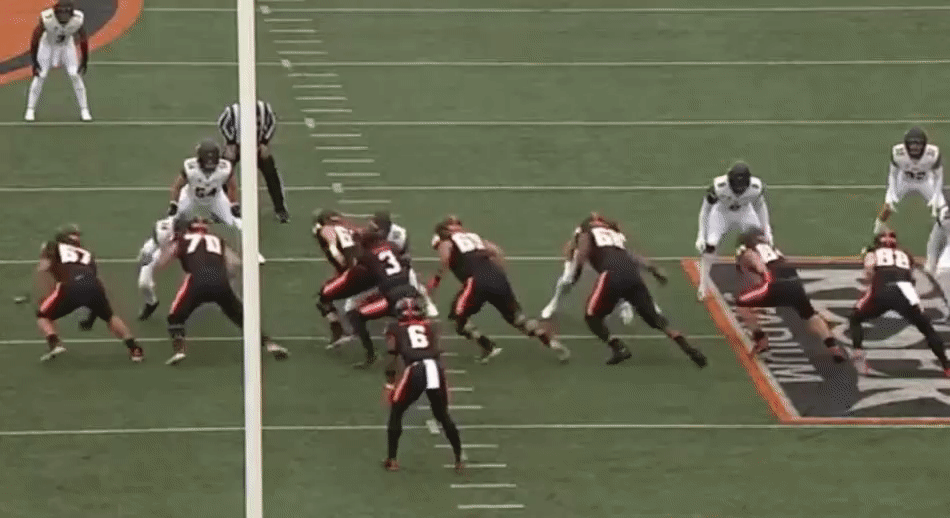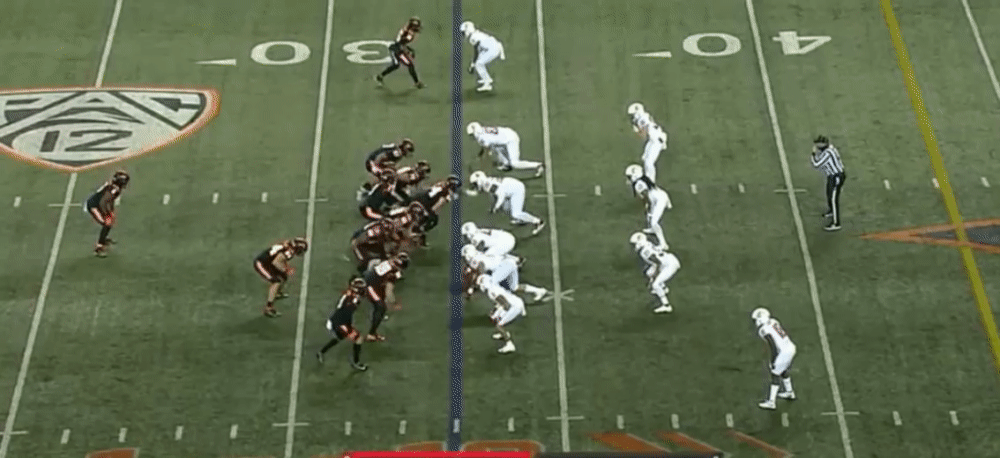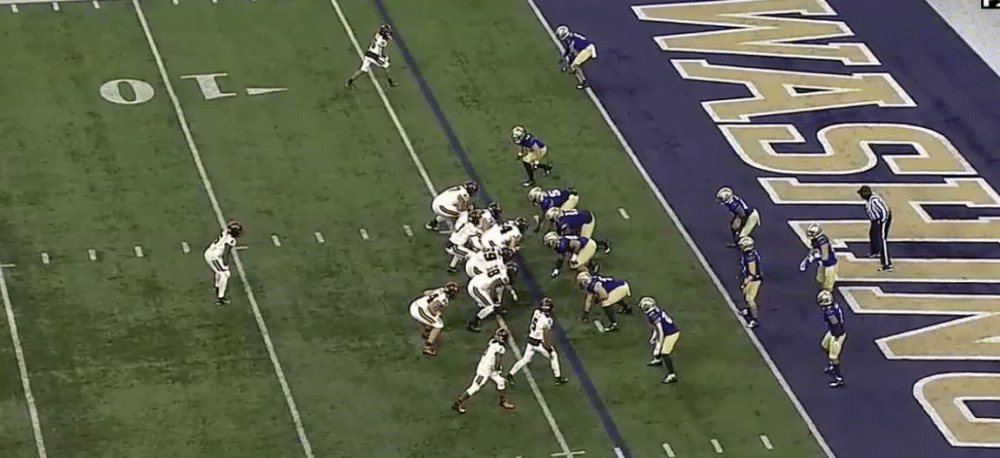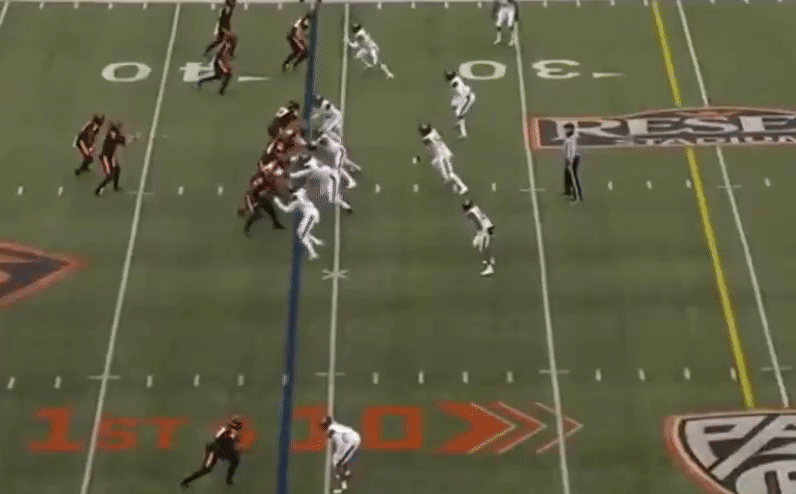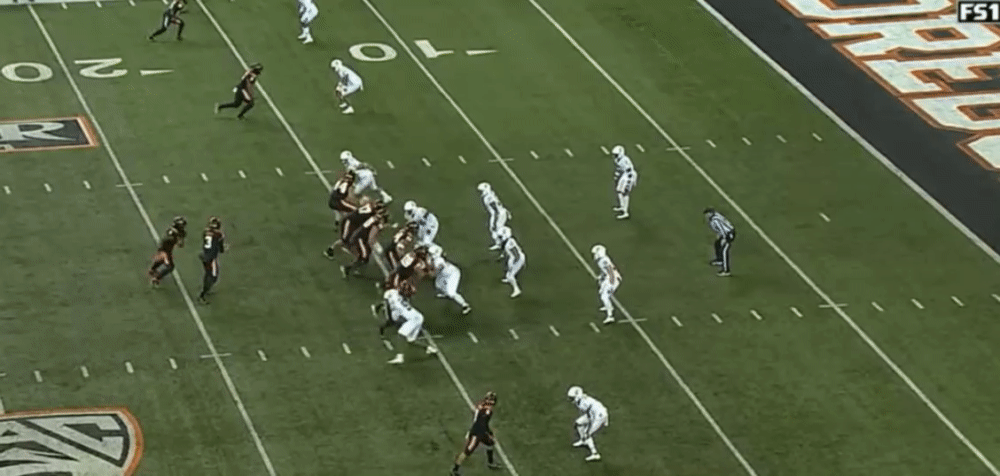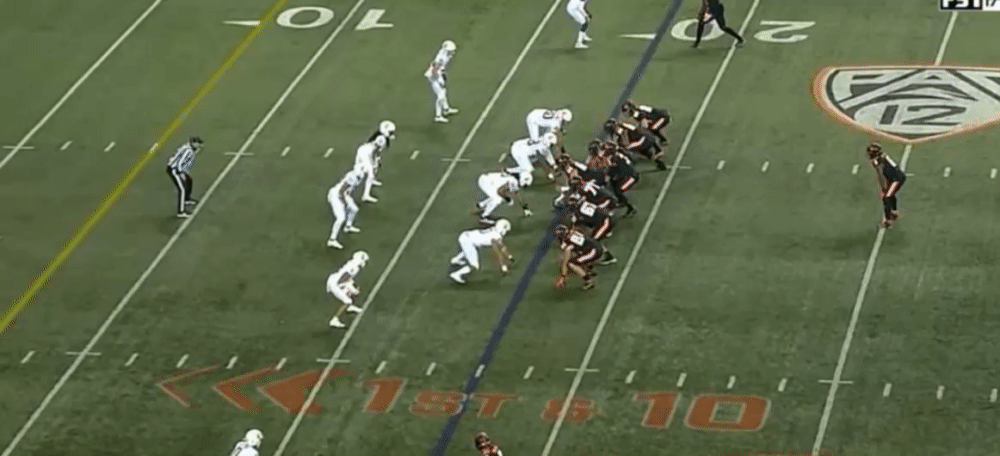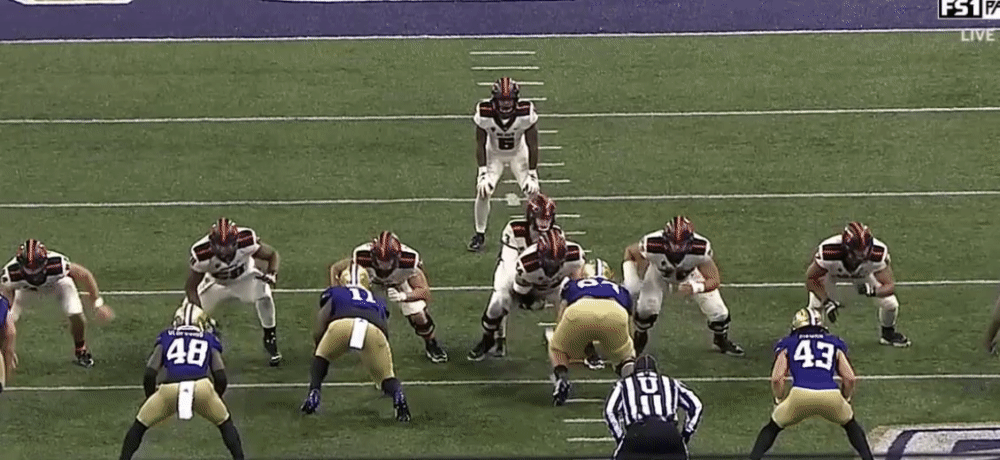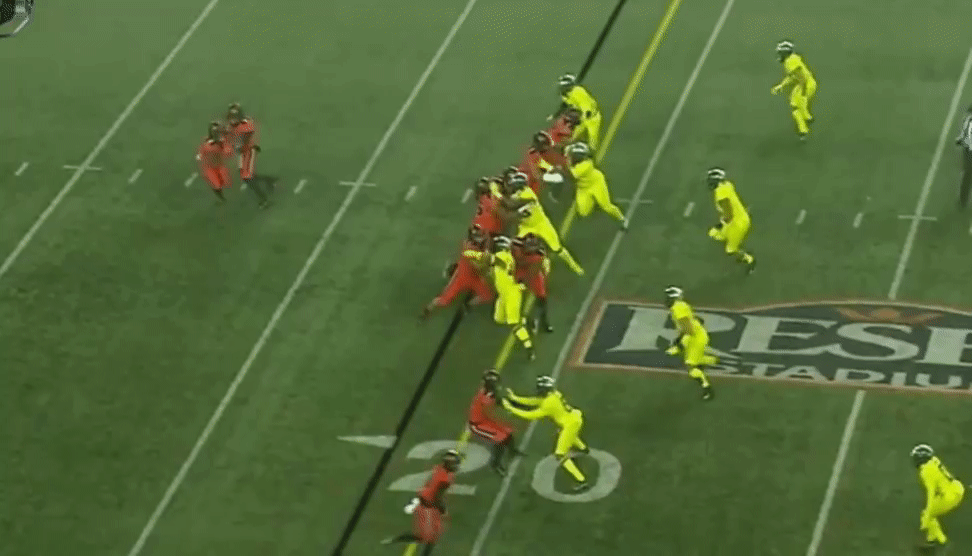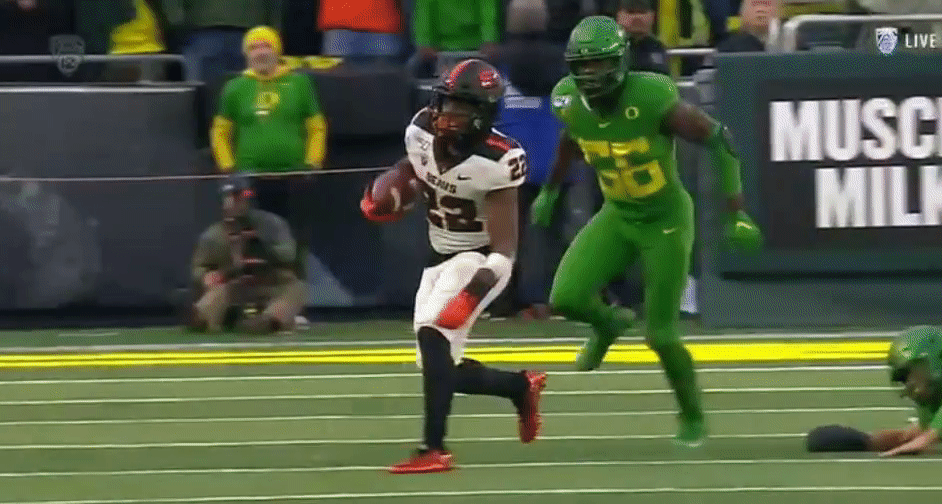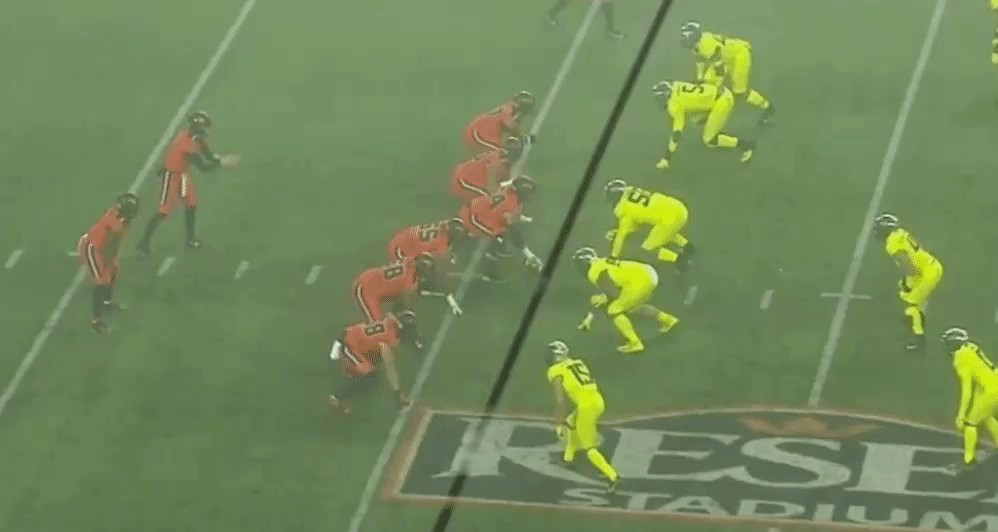The most notable transaction the Detroit Lions have made since the conclusion of the NFL Draft was waiving veteran running back Kerryon Johnson.
On the surface, the move was moderately surprising, but it also demonstrated the organization’s confidence in seventh-round pick Jermar Jefferson. Factoring in his potential, as well as Johnson’s injury history against his salary, the team opted to move forward with a fresh face behind D’Andre Swift and Jamaal Williams at the top of the depth chart.
For most Lions fans, Jefferson, who agreed to a four-year deal on Friday, is a bit of an unknown. That’s understandable given he played on the opposite coast for an Oregon State program that doesn’t typically generate a lot of national appeal.
With that in mind, we thought we’d dive into Jefferson’s film in an effort to give you a better understanding of what the rookie running back will bring to the table.
► Athletic profile: Based on the numbers Jefferson posted at his pro day in early April, he’s a below-average athlete for his position, in nearly every measurable regard. The Lions have publicly hypothesized the prospect’s 4.60-second 40-yard dash caused him to fall to the seventh round of the draft, but his explosion, change of direction and strength metrics are even more alarming. He managed to post just 13 reps on the bench press — surprising for his 5-foot-10, 206-pound frame — and his three-cone time ranked bottom-10 percentile for running backs.
► Vision: The ability to read his blocks and anticipate the development of holes is at the heart of Jefferson’s success as a runner.
Against Cal last season, Jefferson opened up the game with a 75-yard touchdown run. Initially cutting behind the block of his left guard, the back quickly shifts his focus to the safety and uses traffic created by his tight end blocking a defensive end to make a second cut into the open field for the long score.
The majority of Jefferson’s production comes on one-cut-and-go runs up the middle where he can read his interior blocking and squeeze through the lanes provided.
Jefferson is less likely to bounce a run outside because his lateral speed isn’t as much of a threat. He’s at his best outside the tackles when taking pitches, where he can put his vision to use in space.
► Balance/power: As Detroit’s director of pro personnel Lance Newmark said in a recent call with season-ticket holders, Jefferson isn’t a power back who will push piles. While he exhibits a comfort level working in crowded spaces, he doesn’t break many tackle attempts and often goes down on early contact.
That’s not to say he’s entirely devoid of power, particularly in the open field. If he gets one-on-one with a defensive back, he will lower a shoulder and is capable of maintaining his feet while running through a smaller defender.
► Burst: Trailing only his vision, this is Jefferson’s next best trait. When he sees or even anticipates a hole, he slams on the gas and shows good acceleration through the initial layer of the defense. While we noted his average 40-yard time, his 10-yard split was one measurable that checked in above-average and looks better in pads.
► Patience: Jefferson doesn’t waste a lot of time behind the line of scrimmage. He has a good sense of what he wants to do once he takes the handoff and gets moving north-south in a hurry.
Still, he shows enough patience for the blocks to develop. Rarely do you see him running up the back of his linemen.
► Elusiveness: Jefferson’s elusiveness is more predicated on his feel for his blocking than his natural ability to beat a defender one-on-one. While he’s capable of sticking his foot in the ground and making a hard cut, it’s generally a predetermined action and not set up by shortening his stride or relying on head/shoulder fakes.
► Play speed: The Lions have noted concerns about Jefferson’s pro day performance were alleviated not just through film study but tracking data, which showed he registered the third-fastest speed among draft-eligible running backs in 2020.
Some guys just move better in pads and that showed up in the first play we watched of his film, when he broke through the line and outran the Oregon defense for an 82-yard touchdown.
► Ball security: There’s certainly room for improvement. Jefferson fumbled six times during his three seasons (once every 4½ games), losing four. He had a bad fumble against Washington State as a freshman, which led to a touchdown and sealed the loss the Beavers. He also got caught trying to do too much against Oregon in 2019, having the ball slip from his grasp while trying to hurdle a defender in the open field.
On a down-to-down basis, Jefferson shows good form, carrying the ball high and tight, often covering up with his off-arm in traffic and exhibiting awareness of trailing defenders attempting to rip the ball free.
► Receiving skills: Jefferson caught 25 passes his freshman season, but he averaged just 1.2 receptions per game across his final two collegiate campaigns. Some of that could be chalked up to schematic decisions, but his limited athleticism shows up more prominently with his route running out of the backfield.
Jefferson lacks the wiggle to create separation on angle routes across the middle and isn’t as fluid as you’d like to see turning upfield after hauling in a screen pass. If he receives the ball in space, with blocking set up in front of him, he’s capable of turning it into an adequate gain.
Even with development, it’s difficult to see this area becoming a strength.
► Blocking: The Beavers left Jefferson in as a blocker several times each game, but there’s not enough on the four games of film we watched to make a firm judgment on how successful he can be in this area.
It can be safely said he checks the important box of effort, showing no hesitation to step up and take on the rare defender who broke through the offensive line prior to the quarterback releasing his throw.
► Durability: An ankle injury as a sophomore cost him two games and a percentage of his workload once he returned to action. That played a big role in his production decline that season. Throughout his college career, he showed an ability to shoulder the load, handling 20 or more carries in 14 of his 27 college games.
► Conclusion: Jefferson is a nice change-of-pace addition for the Lions who should be capable of shouldering increased responsibilities if either Swift or Williams get banged up through the course of the season.
Jefferson’s decisive, one-cut style won’t result in many negative plays, while his vision and burst suggest he’s a threat to snap off a big gain every time he takes a handoff. He has the attitude and demeanor to develop into an adequate pass protector, but his relative lack of athleticism will likely hinder his ability to consistently contribute in the receiving game outside of well-designed screens.
jdrogers@detroitnews.com
Twitter: @Justin_Rogers
